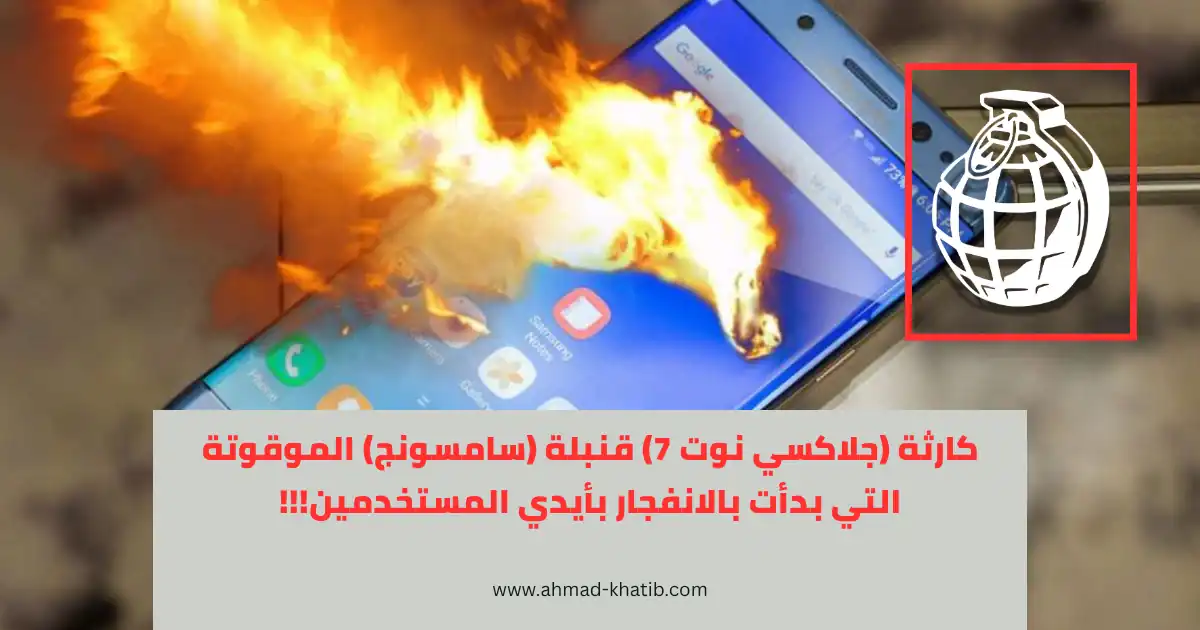كارثة سامسونج نوت7 القنبلة الموقوتة 2016 - قصة وعبرة
سحب 2.5 مليون جهاز، خسائر 5 مليارات دولار، وفقدان ثقة المستخدمين لسنوات
كارثة سامسونج نوت7 - القنبلة الموقوتة التي انفجرت بأيدي المستخدمين، وتسببت بخسائر تجاوزت 5 مليارات دولار!!!
كيف؟ في عام 2016، واجهت سامسونغ واحدة من أكبر الأزمات في تاريخها الحديث، حين بدأت هواتف Galaxy Note 7 بالانفجار في أيدي المستخدمين، في الطائرات والمطارات حول العالم…
السبب؟ خلل صغير في تصميم البطارية، لا تتجاوز كلفة إصلاحه – لو اكتُشف مبكراً – سوى مبلغ زهيد مقارنةً بالخسائر اللاحقة. لكن الضغط على فرق التطوير للإسراع في الإطلاق، وسوء الرؤية بعدم تحري علامات الخطر المبكرة… أدى إلى كارثة عالمية.
النتيجة؟ • سحب 2.5 مليون جهاز من الأسواق • خسائر تجاوزت 5 مليارات دولار • ضرر كبير على سمعة الشركة التي تُعد من أقوى العلامات التقنية في العالم، وفقدان ثقة المستخدمين لسنوات
لم تكن المشكلة تقنية فحسب… بل كانت أزمة قيادة واتخاذ قرار، وثقافة مؤسسية، وإدارة مخاطر. كان على سامسونغ أن تتوقف، تعترف، وتراجع نفسها… وهذا ما فعلته بالفعل، لتعود أقوى جراء تغيير جذري في منهجيات الجودة وثقافة اختبار المنتجات.
🔍 الدروس المستفادة السرعة ليست إنجازاً حينما تكون على حساب الجودة. وفي عالم الأعمال، يكون الفرق أحياناً بين المنتج الناجح والكارثة العظيمة… تفصيل واحد صغير ينبغي الحذر منه مسبقاً بمنهجية تفادي مخاطر استباقية لا تقدم السرعة على الجودة.
How did it happen? In 2016, Samsung faced one of the most severe crises in its modern history, when Galaxy Note7 devices began exploding in users’ hands — and even on airplanes and in airports around the world…
The reason? A small defect in the battery design, one that would have cost very little to fix had it been detected early. But the pressure placed on development teams to accelerate the launch, coupled with a lack of foresight and the failure to monitor early warning signs… ultimately led to a global crisis.
The result? • 2.5 million devices recalled from the market • More than $5 billion in financial losses • Significant long-term damage to the reputation of a company considered one of the strongest global tech brands, and a multi-year decline in consumer trust.
The issue was not merely technical… It was a risk-management-related failure of leadership, decision-making, and organizational culture. Samsung had to pause, acknowledge the issue, and reassess internally… which is exactly what it did — returning stronger after a complete transformation of its quality methodologies and product-testing culture.
🔍 Lessons Learned Speed is not an achievement when it compromises quality. In business, the difference between a successful product and a major disaster can sometimes be a single overlooked detail — one that could be proactively identified within a risk-mitigation framework that never prioritizes speed over quality.
أحمد الخطيب
